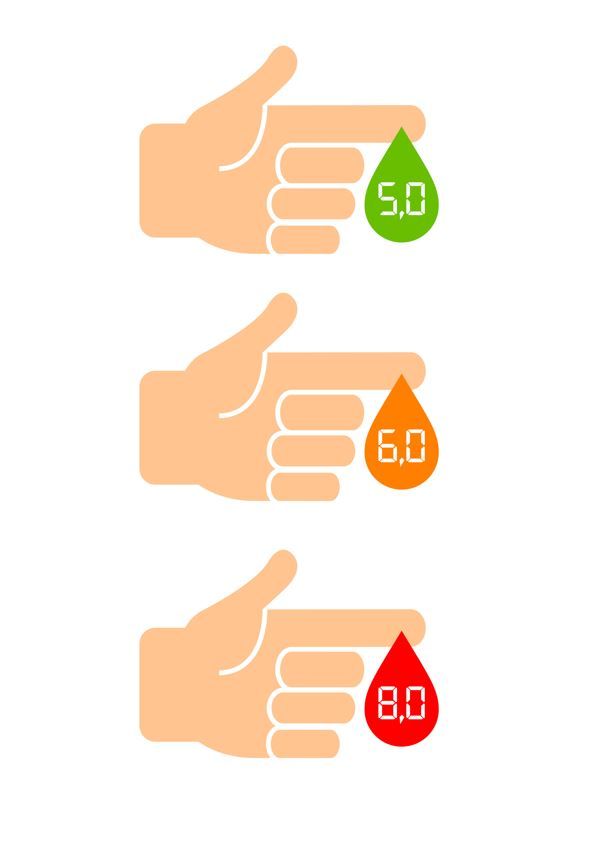- Clinical Technology
- Adult Immunization
- Hepatology
- Pediatric Immunization
- Screening
- Psychiatry
- Allergy
- Women's Health
- Cardiology
- Pediatrics
- Dermatology
- Endocrinology
- Pain Management
- Gastroenterology
- Infectious Disease
- Obesity Medicine
- Rheumatology
- Nephrology
- Neurology
- Pulmonology
Screening for Diabetes by Age vs by Weight Could Reduce US Health Disparities, Suggests a New Study
The disproportionate prevalence of undiagnosed diabetes among racial/ethnic minorities in the US begs for a new screening paradigm; this may be the one.
Screening all US adults aged 35 to 70 years, regardless of weight, will identify the greatest number of adults with diabetes—and, importantly, prediabetes—according to findings from researchers at Northwestern University Feinberg School of Medicine.
©Arcady/Adobe Stock

Current type 2 diabetes screening guidelines set forth by the US Preventive Services Task Force (USPSTF) in 2021 recommend screening asymptomatic adults in this age range but limit the recommendation to those with overweight or obesity. There are racial and ethnic groups, however, that tend to develop diabetes at lower body mass index (BMI), meaning that this approach could miss a diabetes or prediabetes diagnosis in a significant number of Americans, write study authors in the American Journal of Preventive Medicine.
“All major racial and ethnic minority groups develop diabetes at lower weights than white adults, and it’s most pronounced for Asian Americans,” lead investigator Matthew O’Brien, MD, MsC, an associate professor of medicine at Northwestern University Feinberg School of Medicine, said in a Feinberg statement. The authors report in the study that an estimated 6 million Asian Americans have prediabetes or undiagnosed diabetes.
“Diabetes is a condition in which unacceptable racial and ethnic disparities persist,” O’Brian added. A screening approach that would help maximize equity would allow broader and earlier diagnoses, he said, and help reduce associated morbidity.
“All major racial and ethnic minority groups develop diabetes at lower weights than white adults, and it’s most pronounced for Asian Americans. Diabetes is a condition in which unacceptable racial and ethnic disparities persist."
The 2021 USPSTF recommendations lowered the age to initiate screening to 35 years from its 2015 recommendation of 40 years. The Task Force also suggested clinicians could consider earlier screening in racial and ethnic groups at substantial risk for diabetes at younger ages or lower BMI; the alternatives, however, were not formally included in the final recommendation, O'Brien and colleagues note.
To evaluate the health equity implications of the guidelines change, the Northwestern investigators designed their study to first compare the clinical performance characteristics of the 2015 and 2021 USPSTF screening recommendations and second, to examine the yield of alternative age and BMI cutoffs in the US population overall and separately by race and ethnicity.
The research team tapped National Health and Nutrition Examination Surveys (NHANES) data from 2017 to March 2020 for nonpregnant adults aged ≥18 years without a self-reported diabetes diagnosis. Analyses were conducted between 2021-2022. The final cohort numbered 3243.
Of the 3243 participants, 1261 were eligible for screening according to the 2015 USPSTF criteria and 1451 according to the 2021 criteria. The proportionate increase in the total eligible population was 14.8%, according to the results. Numbers of newly eligible adults increased across all racial and ethnic groups from 2015 to 2021: Asian (17.9%), Black (13.9%), Hispanic (30.6%), and White (14.0%).
O'Brien et al report that overall, 46.8% of US adults without a diabetes diagnosis had prediabetes or undiagnosed diabetes, representing 100.7 million adults. Among those with prediabetes, 18.8% were aged <35 years and 14.4% were aged >70 years. Among those with undiagnosed diabetes, fewer were aged <35 years (6.5%) and a comparable proportion were aged >70 years.Minority groups were overrepresented among adults with undiagnosed diabetes.
O'Brien et al report that overall, 46.8% of US adults without a diabetes diagnosis had prediabetes or undiagnosed diabetes, representing 100.7 million adults.
Sensitivity, specificity tradeoff
The investigators found that the 2021 criteria exhibited marginally higher sensitivity (58.6%, 95% CI, 55.5-61.6 vs 52.9%, 95% CI, 49.7- 56.0) and lower specificity (69.3%, 95% CI, 65.7-72.2 vs 76.4%, 95% CI, 73.3-79.2) than the 2015 criteria both overall, and within each racial and ethnic group. Screening at lower age and BMI thresholds resulted in even greater sensitivity and lower specificity, especially among Hispanic, non-Hispanic Black, and Asian adults. Screening all adults aged 35−70 years regardless of BMI yielded the most equitable performance across all racial and ethnic groups, they concluded.
“Choosing the optimal screening approach to promote health equity requires evaluating tradeoffs in sensitivity and specificity that occur when lowering BMI or age cutoffs. Adherence to screening criteria that maximize sensitivity would result in identifying the greatest proportion of adults with prediabetes and diabetes. Maximizing sensitivity could be considered most appropriate because glycemic testing is inexpensive, the harms of false-positive results are low, and evidence-based treatment options for prediabetes and diabetes are available,” O'Brien and colleagues wrote.
The public health impact of diabetes cannot be overstated, the authors write, citing data to suggest that approximately half of US adults have type 2 diabetes or prediabetes. They add that 81% of adults with prediabetes are not aware of having the condition, and 23% of diabetes cases remain undiagnosed. Up to 70% of adults with prediabetes will eventually develop diabetes.
Reference: O'Brien MJ, Zhang Y, Bailey SC, et al. Screening for prediabetes and diabetes: clininical performance and implications for health equity. Am J Prevent Med. Published online March 24, 2023. doi:10.1016/j.amepre.2023.01.007
